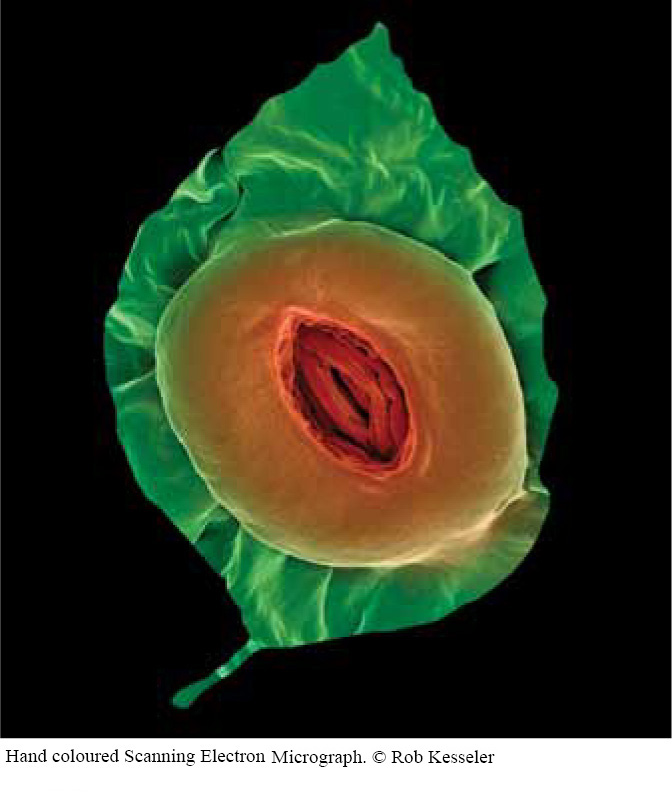
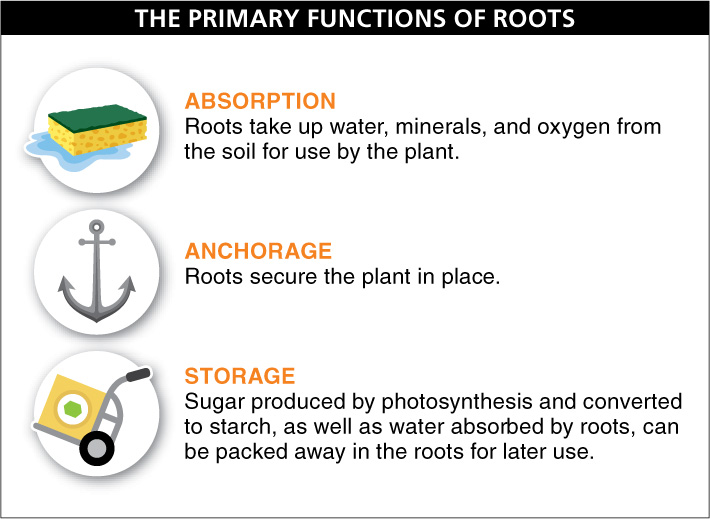
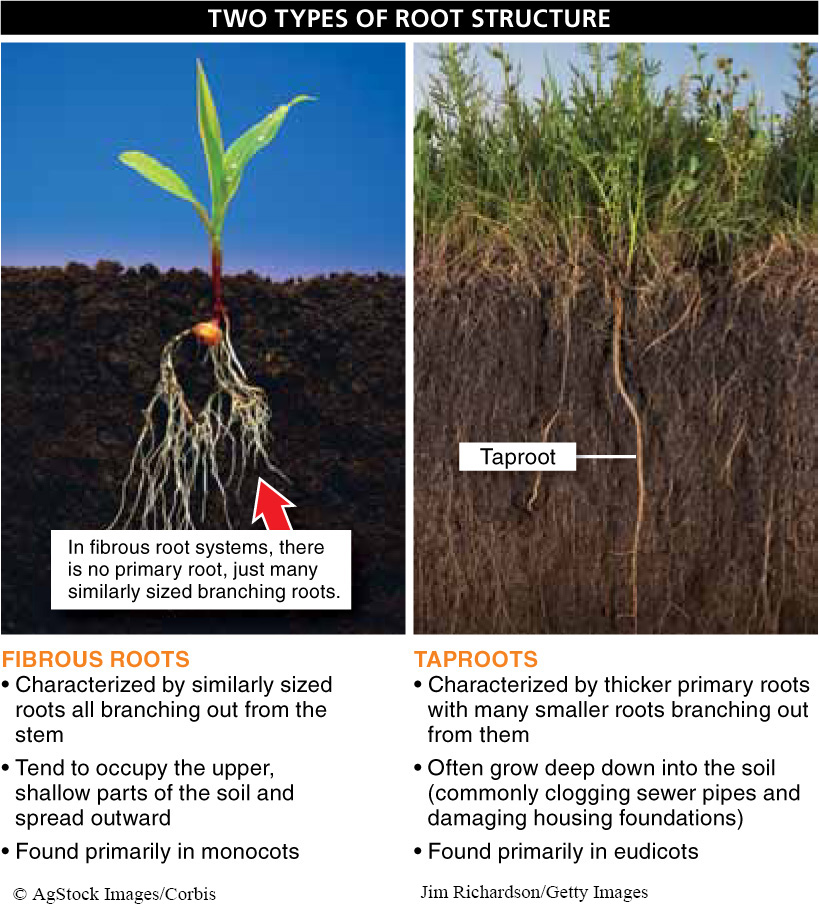
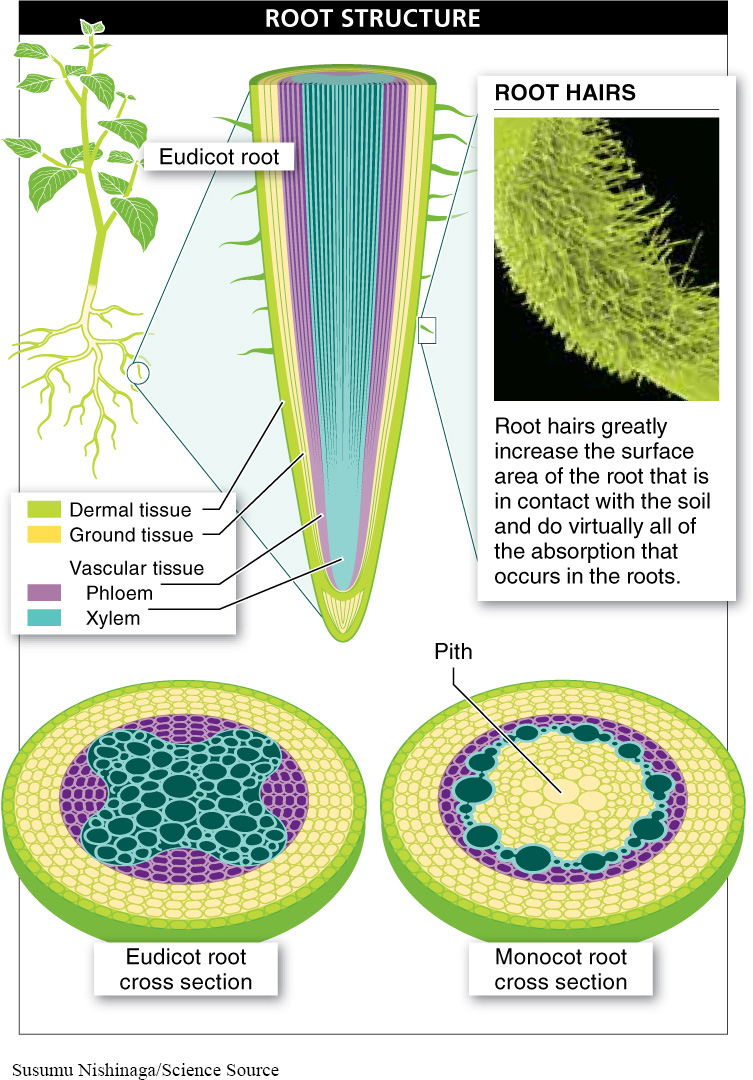
Roots don’t garner the attention enjoyed by flowers, fruits, or the trunks and branches of tall trees. But they are essential to plant growth and survival, and they perform three primary functions (FIGURE 17-9).
- 1. Absorption. Roots take up water and dissolved minerals from the soil. In deserts, absorbing enough water can be difficult: mesquite plants send roots straight down as deep as 175 feet to reach water, while some cacti send roots outward 50 feet in all directions to collect moisture. Roots also obtain oxygen from the soil.
- 2. Anchorage. Roots secure the plant in place. Also, without this anchorage, plants would not be able to stand upright.
- 3. Storage. Sugar produced in the leaves can be sent to fleshy roots, where it is converted to starch and packed away for later use, much like humans store energy as lipids in fat cells around their waists. Sweet potatoes, carrots, radishes, and turnips are examples of starch-
filled roots. Water, too, is sometimes stored in roots.
“If the roots are not severed, all is well—
—JERZY KOSINSKI, Being There (1971)
There are two types of root systems: taproots and fibrous roots (FIGURE 17-10). Taproots often grow deep down into the soil. A taproot is a thick primary root with many smaller roots branching out from it. Found primarily in eudicots, taproot systems can be thought of as more expensive to produce (energetically) but providing greater storage and depth of penetration. Taproots commonly clog sewer pipes or burrow into and through house foundations, causing damage. Fibrous roots are more commonly associated with monocots (but also found in some eudicots). They consist of numerous, similarly sized roots all arising from the stem and branching out. They tend to occupy the upper, shallow parts of the soil and spread outward. Fibrous root systems are energetically less expensive to produce, characteristic of situations in which plants have greater spread and faster growth.
696
The organization of all root tissue is simple (FIGURE 17-11). A cross section of a root reveals the usual three tissue types. In most eudicots, the vascular tissue (xylem and phloem) is a central column, surrounded by ground tissue, and at the outer edge is dermal tissue. The xylem—
How are sweet potatoes like the “love handles” on a person’s waist?
When the ground tissue in a root is used to store energy in the form of starch, the root becomes enlarged and fleshy. Plants store excess energy for the times when rapid growth or flower production demands a lot of energy. Having so much food all in one place, though, can be risky. Animals are often tempted to find such storehouses and eat them. Many humans, for instance, like to dig up and eat large roots such as beets, turnips, carrots, and sweet potatoes.
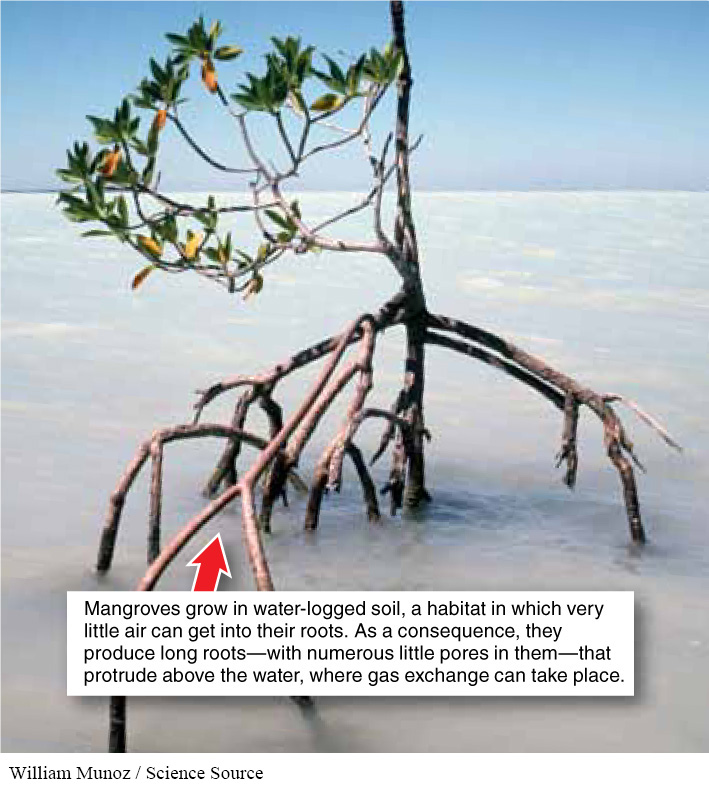
The outer surface of the root is epidermis. Perhaps the most important components of a root’s epidermis are the epidermal cells that elongate and become tiny hairs. These hairs greatly increase the surface area of the root that is in contact with the soil. Root hairs do virtually all of the absorption that occurs in the roots. The epidermal cells are extremely permeable to water and absorb it easily. The water then moves through and between the cells of the root’s ground tissue until it reaches the xylem, from where it is distributed throughout the plant.
697
The many spaces between root cells allow oxygen to diffuse in so that the root’s cells can respire (make ATP and exchange gases with the environment). Mangroves grow in water-
TAKE-HOME MESSAGE 17.4
Roots have three primary functions in plants: (1) absorption, the uptake of water and dissolved minerals from soil; (2) anchorage, securing the plant in place; and (3) storage of water and excess starch for future use.
Describe and compare taproots and fibrous roots.
Taproots often grow deep down into the soil and are characterized by a thicker primary root with many smaller roots branching out from it. Fibrous roots have numerous similar sized roots, all arising from the stem and branching outward. They tend to occupy the upper, shallow parts of the soil and spread outward.